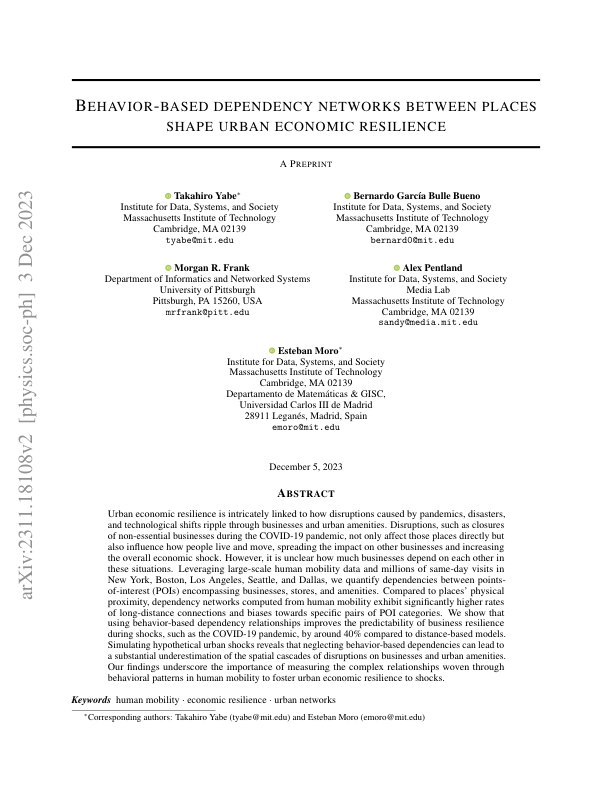
---
> Analysis of human behavior patterns using mobility and credit card purchasing data have revealed that activity patterns are clustered into a mixture of behavioral lifestyles ... suggesting that certain industries or place categories could have a high dependency on visitors arriving from other specific industries or places. For example, a gas station on a commuting route to business districts might be affected as well as the cafe in that business district if people change their visitation patterns to offices.
---
> We find that empirical dependency networks generated via movements between POIs contain a significantly higher rate of long-distance connections between places, and are biased towards specific POI category pairs in comparison to a baseline network based on the gravity model. This means shocks in one part of the economy have a greater potential to cascade across a city than would be expected.
- [View Highlight](https://read.readwise.io/read/01j17vyrmdpeqf01cgdw3ktnv1)
---
> In this context, our paper contains three important contributions toward understanding the economic network de- pendencies in cities. First, our approach measures and reveals that the dependent relationships that exist between businesses and places are highly complex products of human behavioral preferences and decisions rather than a measure determined solely by the urban form, ... Second, using different periods of the COVID-19 pandemic as external shocks, we showed that using the pre-pandemic behavior-based dependency network with a Leontief input-output formulation improves the predictability of the spillover shocks to different businesses, compared to the distance-based co-location network. Third, simulations of hypothetical urban shocks showed that the dependencies generated by human behavior significantly amplify the shocks to places that are located further away from the origins of the shocks.
---